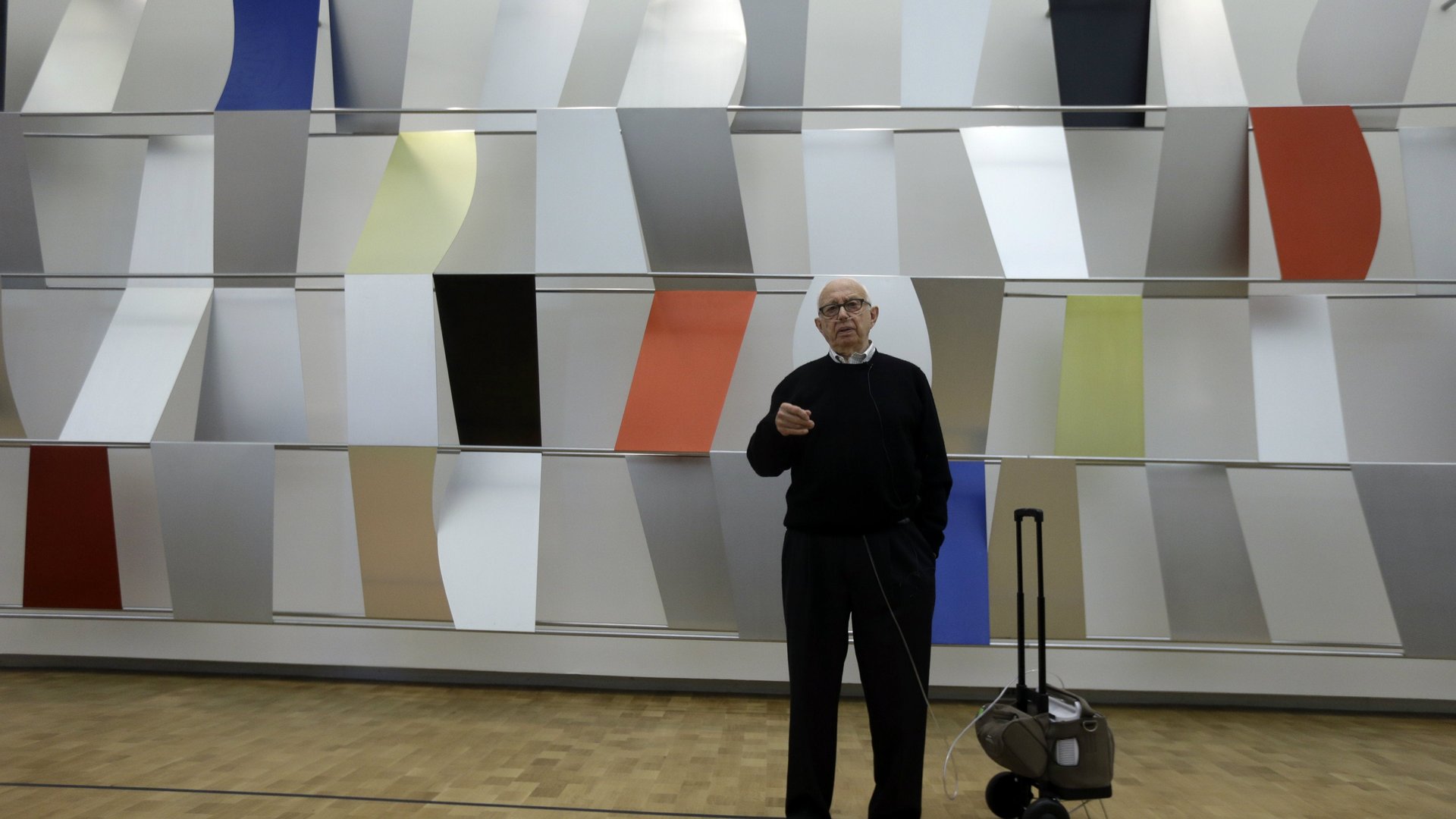Artist Ellsworth Kelly, who once designed military camouflage patterns, has died
American artist Ellsworth Kelly died at his home in Spencertown, New York on Dec. 27. He was 92.


American artist Ellsworth Kelly died at his home in Spencertown, New York on Dec. 27. He was 92.
Relentless about producing work until his last days, despite a respiratory condition that kept him tethered to a machine, Kelly, is best known for his bold experimentation with color fields and hard-edged geometric forms. In a revelatory interview with the Guardian last month, Kelly confessed that he wanted to keep going.
“I want to live another 15 years, but I know I’m not going to,” he said. “I’m not really whole any more. I think it [the state of his lungs] is to do with the turpentine, because I wasn’t a smoker, but I need the oxygen now.”
Apart from Jasper Johns, Kelly was the “last hero standing” of American avant-garde, as the New Yorker once described him.
In 1943, Kelly joined the US army as part of the 603rd Engineers Camouflage Battalion’s Ghost Army where he designed military propaganda posters and camouflage patterns. Along with other painters and artists, Kelly created decoy devices and trompe-l’œil scenarios to deceive the enemy. After the war, Kelly trained in Paris and named Picasso and Matisse as among his artistic influences.
Kelly was conferred the National Medal of the Arts by President Barack Obama in 2012.